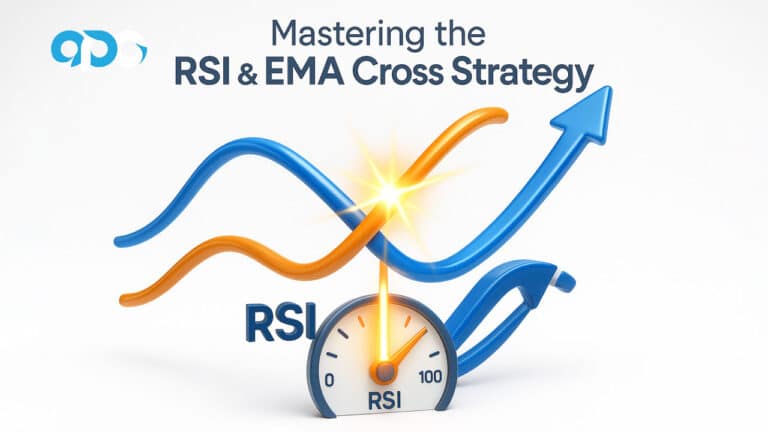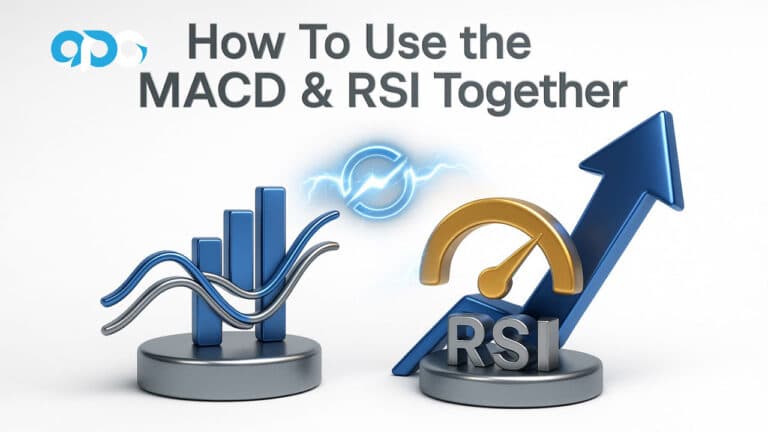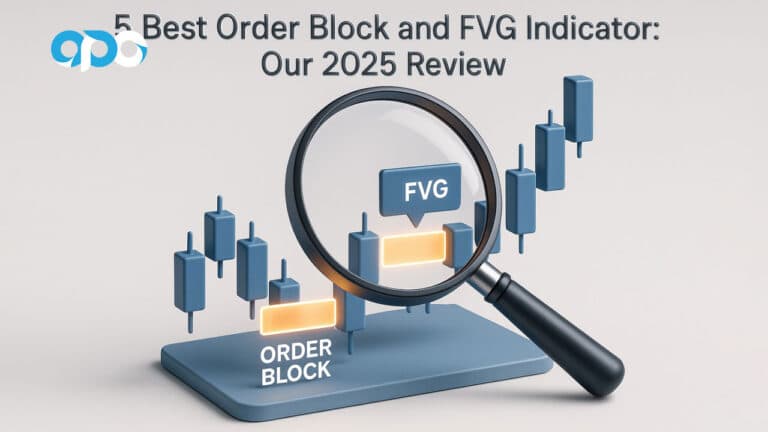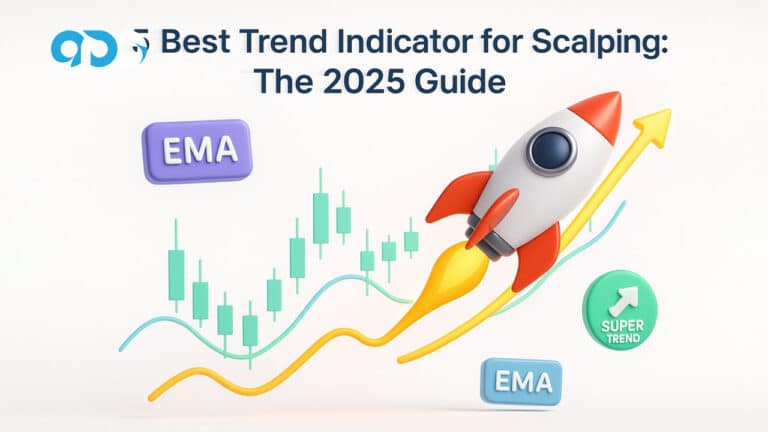News trading in Forex refers to a strategy that involves making trading decisions based on economic news releases and other significant events. This approach leverages the impact that news can have on currency prices, allowing traders to capitalize on market volatility that typically follows major announcements. Unlike other trading strategies that rely heavily on technical analysis, news trading focuses on the timing and substance of news events to predict market movements. To maximize the potential of this strategy, choosing a reliable forex trading broker is essential, as it ensures accurate execution and access to relevant market data.

News Importance in Forex Market
The importance of news trading in the Forex market cannot be overstated. Economic indicators, central bank announcements, and geopolitical events can lead to significant and rapid changes in currency prices. For instance, a better-than-expected employment report in the United States can lead to a stronger US dollar, while political instability in a country can weaken its currency. By understanding how to trade the news effectively, traders can position themselves to take advantage of these price movements and potentially achieve substantial profits.

Purpose of the Article
This article aims to provide a detailed guide on news trading in Forex. We will cover essential aspects such as key economic indicators, strategies for trading the news, tools and resources, and the psychology of news trading. By the end of this guide, you will have a comprehensive understanding of how to incorporate news trading into your Forex strategy.
Understanding the Forex Market
Overview of the Forex Market
The Forex (foreign exchange) market is the world’s largest and most liquid financial market, with a daily trading volume exceeding $6 trillion. It operates 24 hours a day, five days a week, and involves trading currency pairs like EUR/USD or GBP/JPY. This global market connects banks, brokers, and trading platforms worldwide, enabling the buying and selling of currencies.

Major Players in Forex
Participants in the Forex market include:
- Central Banks: Influence market through monetary policies and interventions.
- Commercial Banks: Provide liquidity and handle large transactions.
- Financial Institutions: Include investment funds and hedge funds engaged in speculative trading.
- Corporations: Use Forex for hedging and international business.
- Retail Traders: Individuals trading through online platforms.
Each player has distinct motivations, from hedging against currency risks to profiting from price movements, influencing market dynamics.
Read More: Fundamental Analysis in Forex
Currency Pairs and Their Significance
Currency pairs form the basis of Forex trading, quoted as one currency’s value against another. Major pairs like EUR/USD, GBP/USD, and USD/JPY are highly traded and liquid, affecting market trends. Cross-currency pairs exclude the US dollar, while exotic pairs involve less common currencies, offering varied trading opportunities. Understanding pair characteristics is crucial for managing trade volatility and risk.
Basics of News Trading
What is News Trading?
News trading involves making trading decisions based on the release of economic data, central bank announcements, and other significant events that can impact currency prices. Traders use news to anticipate market movements and enter or exit positions accordingly. This strategy requires staying informed about scheduled news releases and understanding their potential impact on the Forex market.

Types of News that Impact Forex
Various types of news can influence the Forex market, including:
- Economic Indicators: Reports on GDP, employment, inflation, and retail sales.
- Central Bank Announcements: Decisions on interest rates and monetary policy.
- Geopolitical Events: Elections, trade agreements, and conflicts.
- Natural Disasters: Earthquakes, hurricanes, and other significant disruptions.
How News Affects Currency Prices
News can cause significant volatility in the Forex market. Positive economic data or favorable geopolitical events can strengthen a currency, while negative news can weaken it. Traders must understand the potential impact of different news events to make informed trading decisions. For example, a higher-than-expected inflation report may lead to expectations of interest rate hikes, strengthening the currency.

Key Economic Indicators
Gross Domestic Product (GDP)
GDP is a comprehensive measure of a country’s overall economic activity. A rising GDP indicates economic growth, which is generally positive for the currency. Conversely, a declining GDP signals economic weakness, which can negatively impact the currency. Traders closely monitor GDP reports as they provide a broad view of economic health.

Employment Reports Employment reports, like the US Non-Farm Payrolls (NFP), offer crucial insights into job creation and unemployment rates. Robust job growth can stimulate consumer spending and economic expansion, bolstering the currency. Conversely, high unemployment may weaken the currency. The NFP report, released monthly on the first Friday, is highly influential in the Forex market.
Inflation Data Inflation measures the rate at which prices for goods and services increase. Central banks monitor inflation closely to guide interest rate decisions. Higher-than-expected inflation can prompt interest rate hikes, strengthening the currency, whereas low inflation may lead to rate cuts and a weaker currency. Key inflation reports include the Consumer Price Index (CPI) and the Producer Price Index (PPI).
Retail Sales and Consumer Confidence Retail sales data reflect consumer spending, a vital driver of economic growth. Strong retail sales indicate a robust economy, which typically supports the currency. Consumer confidence surveys, such as the University of Michigan Consumer Sentiment Index and the Conference Board Consumer Confidence Index, gauge public economic sentiment and predict future spending trends. These reports are crucial for traders assessing economic health.
Trade Balance The trade balance measures a nation’s exports versus imports. A trade surplus (exports exceed imports) generally strengthens the currency, reflecting robust international demand for goods and services. Conversely, a trade deficit (imports surpass exports) can weaken the currency. Trade balance reports provide valuable insights into economic health and international trade dynamics, influencing currency values.
Read More: Geopolitical Impact on Forex Trading
Central Bank Announcements
Interest Rate Decisions
Interest rate decisions are among the most influential factors in the Forex market. Higher interest rates can attract foreign investment, boosting the currency, while lower rates can deter investment and weaken the currency. Central banks, such as the Federal Reserve, European Central Bank, and Bank of Japan, regularly announce their interest rate decisions, which can cause significant market movements.

Monetary Policy Statements
Monetary policy statements provide insights into a central bank’s economic outlook and policy intentions. These statements can influence market expectations and currency values. Traders analyze the tone and language used in these statements to gauge future policy actions. A hawkish tone, indicating potential rate hikes, can strengthen the currency, while a dovish tone, suggesting rate cuts, can weaken it.
Minutes of Meetings and Their Analysis
Minutes from central bank meetings offer detailed accounts of discussions and decisions made by policymakers. Traders analyze these minutes to understand the rationale behind policy decisions and anticipate future actions. The minutes can provide additional insights beyond the official statements, helping traders make more informed decisions.
Geopolitical Events
Elections and Political Stability Elections and political shifts can profoundly influence economic policies and investor confidence. Political stability generally bolsters currency strength, while uncertainty can weaken it. Traders closely monitor election outcomes for potential long-term impacts on economic performance and currency values.

Trade Wars and Tariffs Trade disputes, such as those involving major economies like the US and China, disrupt global trade patterns and affect currency values. Tariffs and trade barriers introduce economic uncertainty and increase currency market volatility. Traders stay updated on trade negotiations as they significantly shape market sentiment and trading strategies.
Conflicts and Wars
Geopolitical conflicts, such as wars and territorial disputes, can create risk aversion in financial markets. Investors often seek safe-haven currencies, such as the US dollar or Swiss franc, during times of conflict. Understanding the potential impact of geopolitical tensions on currency values is essential for news traders.
Strategies for News Trading
News trading in Forex demands strategic approaches to effectively navigate market volatility and unpredictability. This article explores various strategies, offering detailed insights to integrate news events into your trading plan.
Pre-News Trading Strategies
Anticipating Market Sentiment
- Research and Analysis: Conduct thorough research to gauge market expectations from upcoming news, utilizing analyst reports and economic forecasts.
- Sentiment Indicators: Use tools like the Commitment of Traders (COT) report to assess trader positioning and sentiment.
- Market Consensus: Monitor consensus forecasts from platforms like Bloomberg and Reuters to anticipate market reactions.
Setting Up Trades
- Entry Points: Employ technical analysis tools such as trend lines and moving averages to identify optimal entry points.
- Risk Management: Define clear stop-loss and take-profit levels to manage risks effectively, ensuring favorable risk-to-reward ratios.
Post-News Trading Strategies
Immediate Reaction Trading
- Fast Execution: Utilize platforms with low latency to capitalize on immediate market movements post-news.
- Volatility Spikes: Identify and act on volatility spikes to exploit quick profit opportunities while managing potential losses.
- Scalping: Execute multiple trades swiftly to benefit from short-term price fluctuations.
Waiting for Confirmation
- Trend Confirmation: Confirm market direction post-news using technical indicators like moving averages and MACD.
- Reduced Volatility: Avoid initial market volatility by waiting for confirmation before entering trades.
News Trading with Breakout Strategies
- Identifying Breakout Levels: Pre-identify key support and resistance levels to place breakout orders.
- Trade Execution: Utilize buy stop and sell stop orders to automate entries based on breakout movements.
- Managing False Breakouts: Verify breakout validity before executing trades to avoid false signals.
Combining Fundamental and Technical Analysis
- Fundamental Insights: Blend fundamental analysis with technical indicators to enhance trading decisions.
- Technical Tools: Use tools like Bollinger Bands and Fibonacci retracements for precise entry and exit points.
- Synergy: Integration of fundamental and technical analyses provides a holistic view for informed trading decisions.
Trading News with Pending Orders
- Types of Pending Orders: Deploy buy stop, sell stop, buy limit, and sell limit orders to automate trade entries.
- Strategic Placement: Position pending orders at strategic levels derived from analysis to execute trades efficiently.
- Risk Control: Implement stop-loss and take-profit levels alongside pending orders for disciplined risk management.
Using Correlation and Diversification
- Currency Correlations: Analyze relationships between currency pairs to diversify trades effectively.
- Diversified Portfolios: Spread trades across multiple pairs to mitigate risk and stabilize portfolio performance.
- Hedging Strategies: Hedge against potential losses using correlated positions to offset adverse market movements.
News Trading with Options
- Straddle Strategy: Implement straddles to profit from significant price movements regardless of direction.
- Protective Puts: Use puts to hedge long positions against downward price movements.
- Covered Calls: Generate additional income on long positions by selling covered calls on owned assets.
Monitoring Market Reactions
- Real-Time Data: Access real-time news and data feeds to stay informed of market developments.
- Market Sentiment: Gauge market sentiment through social media and trading forums to anticipate broader reactions.
- Price Action: Analyze post-news price movements and patterns to validate trading strategies and decisions.
In conclusion, successful news trading requires meticulous planning, disciplined execution, and a blend of strategies tailored to pre-news and post-news scenarios. By integrating market sentiment analysis, technical tools, pending orders, correlation insights, and options strategies, traders can navigate news-driven volatility proficiently, maximizing opportunities and managing risks effectively in the Forex market.
Tools and Resources for News Trading
Economic Calendars Economic calendars from ForexFactory, Investing.com, and DailyFX list upcoming economic events with details on timing, impact, and expected values. They help traders track key news affecting the market.
News Feeds and Alerts Real-time news feeds and alerts from Bloomberg, Reuters, and Trading Economics deliver instant updates on market-moving events. Traders can customize alerts for specific events and markets.
Trading Platforms Platforms like MetaTrader 4 (MT4), MetaTrader 5 (MT5), and cTrader offer charting tools, news integration, and automated trading features essential for news trading strategies. These platforms provide advanced functionalities to support informed decision-making.
Psychology of News Trading
Emotional Control and Discipline
News trading can be emotionally challenging due to market volatility. Maintaining emotional control and discipline is crucial for making rational trading decisions. Traders should develop strategies to manage stress, avoid impulsive actions, and stay focused on their trading plans.
Avoiding Overtrading
Overtrading, or taking excessive trades, can lead to significant losses. Traders should stick to their trading plans and avoid impulsive decisions. Setting clear trading criteria and adhering to them helps prevent overtrading and maintains discipline.
Developing a Trading Plan
A well-defined trading plan outlines trading goals, strategies, risk management techniques, and criteria for entering and exiting trades. A solid trading plan helps traders stay focused, make consistent decisions, and achieve long-term success.
Common Mistakes in News Trading
Ignoring Market Sentiment Neglecting market sentiment and broader trends can lead to poor decisions. Analyzing sentiment indicators like the Commitment of Traders (COT) report offers insights into market positioning and trends.
Over-leveraging Excessive leverage can magnify losses. Traders should use leverage cautiously within their risk tolerance to manage risk effectively.
Chasing the Market Entering trades after significant price moves can lead to poor entry points and losses. Traders should avoid chasing the market and wait for favorable risk-reward opportunities.
Advanced Techniques in News Trading
Options and Futures Options and futures offer strategies like hedging against price swings or leveraging expected market moves. These instruments provide flexibility and can enhance trading strategies.
Hedging Strategies Hedging uses offsetting positions to manage risk, such as using currency options to protect against adverse price movements. Hedging strategies help minimize losses and stabilize returns.
Algorithmic and High-Frequency Trading Advanced traders employ algorithmic and high-frequency trading to capitalize on news events. Automated systems analyze large datasets and execute trades swiftly based on predefined criteria, giving traders an advantage in fast-paced markets.
Conclusion
Summary of Key Points News trading in Forex involves making decisions based on economic data, central bank announcements, and geopolitical events. Key indicators like GDP, employment reports, and inflation data significantly influence currency prices. Effective strategies, risk management, and advanced tools can improve trading performance.
Importance of Continuous Learning The Forex market is dynamic. Continuous learning and staying updated with news and market developments are crucial for success. Traders should review strategies, analyze performance, and adapt to market changes.
Final Thoughts and Recommendations News trading presents opportunities but also risks due to market volatility. A solid trading plan, effective risk management, and emotional discipline are essential. Combining technical and fundamental analysis, staying informed, and learning from experiences can lead to consistent results.
How can I prepare for trading around unexpected news events?
To prepare for unexpected news events:
Diversify Your Portfolio: Spread investments across various currency pairs and asset classes.
Stay Informed: Monitor news and economic calendars for geopolitical developments and natural disasters.
Maintain Liquidity: Ensure sufficient funds to manage sudden market movements.
Use Hedging Techniques: Consider options or futures to protect positions.
Set Alerts: Utilize trading platforms for timely notifications of market changes.
What role do high-frequency trading (HFT) algorithms play in news trading?
HFT algorithms:
Speed and Efficiency: Execute trades rapidly based on predefined criteria.
Market Impact: Contribute to immediate market volatility post-news release.
Algorithmic Strategies: Use complex models to predict market reactions.
Limitations: Require substantial investment in technology and infrastructure.
Can sentiment analysis be used in news trading?
Sentiment analysis:
Social Media and News: Monitor sentiment across platforms for market mood.
Tools and Software: Utilize NLP for analyzing sentiment in news and social media.
Predictive Insights: Assess sentiment to predict market reactions.
Complementary Analysis: Combine with technical and fundamental analysis for comprehensive market understanding.
How do currency correlations impact news trading strategies?
Currency correlations:
Positive Correlation: Pairs move in the same direction (e.g., EUR/USD and GBP/USD).
Negative Correlation: Pairs move oppositely (e.g., EUR/USD and USD/JPY).
Risk Management: Manage risks by diversifying and hedging positions.
Strategic Positioning: Optimize strategies based on correlated pairs’ reactions to news.







